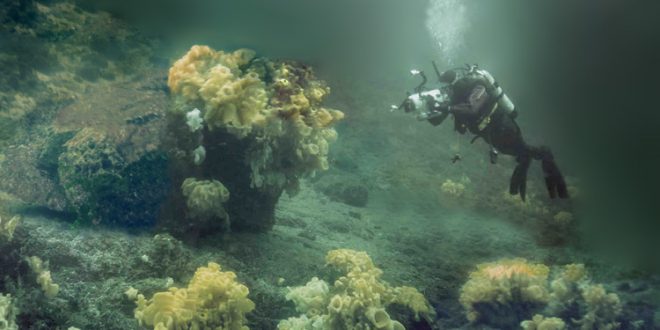Federal Fisheries Minister Dominic LeBlanc announced the establishment of the new Hecate Strait and Queen Charlotte Sound Glass Sponge Reefs Marine Protected Area to safeguard the globally unique and important aquatic environment that provides key habitats for marine wildlife.
The Hecate Strait and Queen Charlotte Sound Glass Sponge Reefs Marine Protected Area is located between Haida Gwaii and the mainland of British Columbia, within the Pacific North Coast Integrated Management Area (PNCIMA), and is home to several globally unique ancient sponge reefs. The four reefs are made up of large colonies of glass sponges estimated to be 9,000 years old and once thought to be extinct worldwide. The glass sponges are highly fragile in nature, taking up to several hundreds of years to recover from damage, and are at risk of significant impacts from human activities in and around the area. They also offer a vital water filtration service, and provide refuge, habitat and nursery grounds for many aquatic species, including rockfish, finfish and shellfish.
Minister LeBlanc was joined by Kim Conway from Natural Resources Canada and Manfred Krautter from the University of Stuttgart, two of the scientists who participated in the exploration of the reefs while mapping the seafloor. Also present were the Canadian Parks and Wilderness Society (CPAWS), the B.C. Seafood Alliance and other stakeholders who have been working together to preserve this unique ocean feature.
This is another step forward for the Government of Canada’s domestic and international marine conservation targets of protecting 5% of marine and coastal areas by 2017 and 10% by 2020. In November 2016 the new Anguniaqvia niqiqyuam Marine Protected Area was designated in Darnley Bay in the Northwest Territories, and in December 2016, the government proposed the designation of St. Anns Bank as a Marine Protected Area.
As part of Canada’s plan to reach its targets, the Government of Canada will continue to establish Marine Protected Areas in both offshore areas and areas currently under pressure from human activities, as well as identify existing and new other area-based measures that play an important role in conserving our oceans. The Government of Canada is also exploring ways to update the Oceans Act to facilitate the designation process for Marine Protected Areas, without sacrificing science, or the opportunity for stakeholders, Indigenous people and the public to provide input.
Agencies/Canadajournal
 Canada Journal – News of the World Articles and videos to bring you the biggest Canadian news stories from across the country every day
Canada Journal – News of the World Articles and videos to bring you the biggest Canadian news stories from across the country every day



